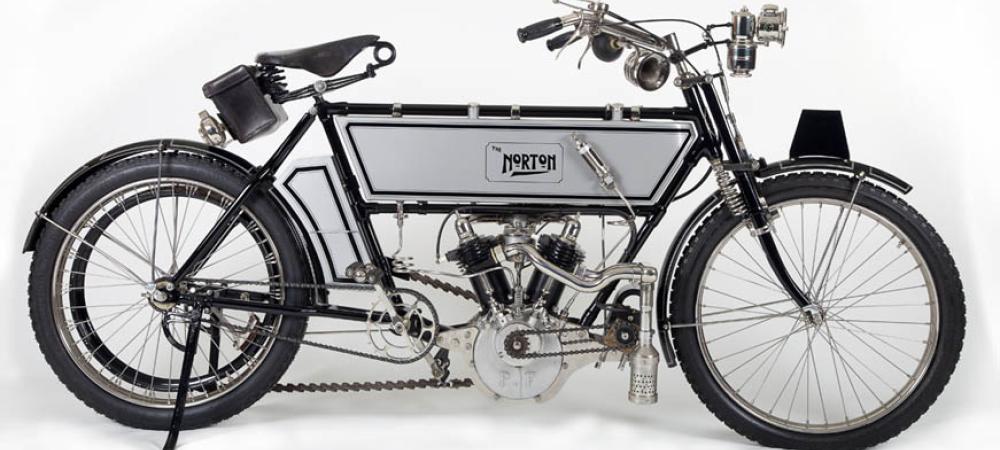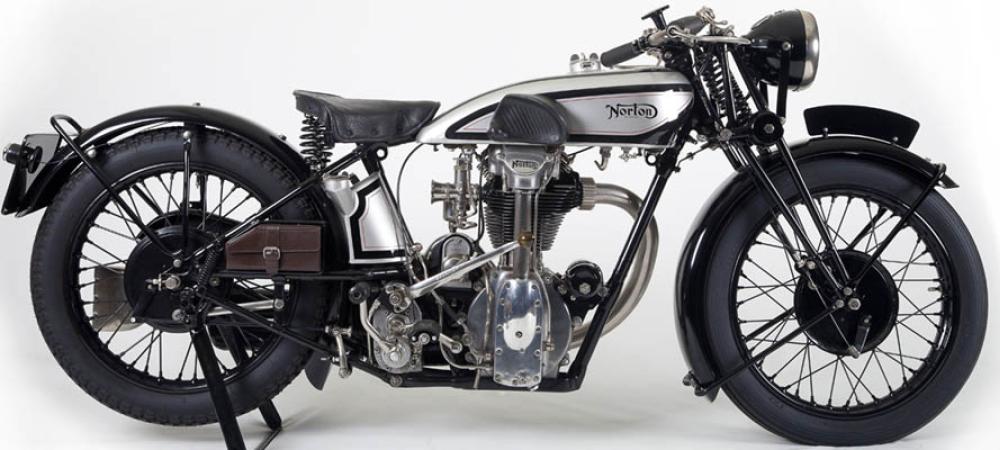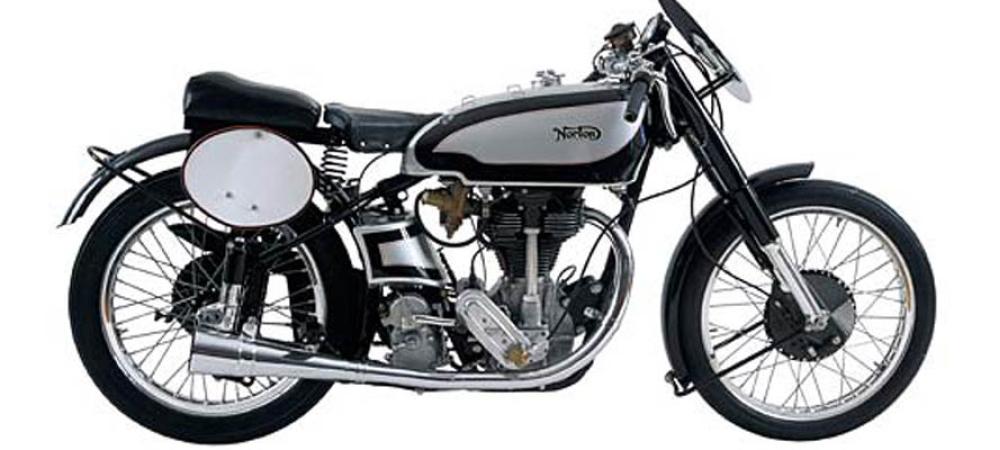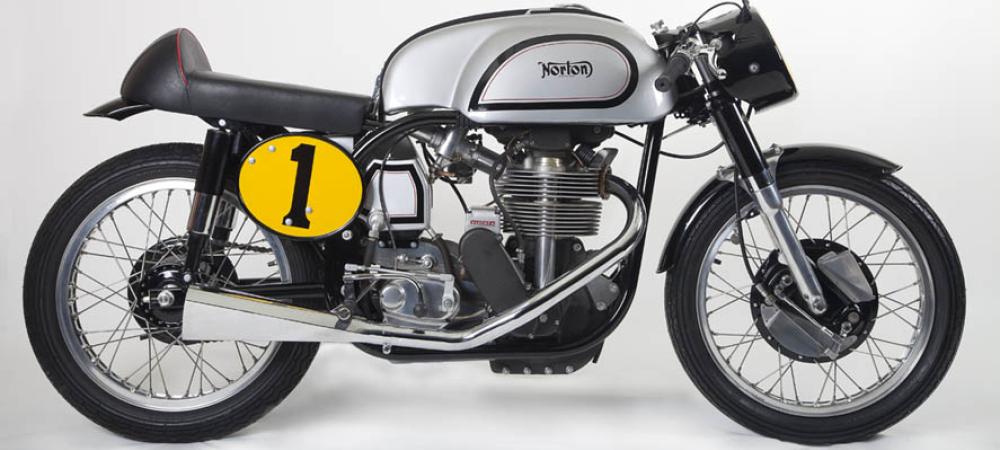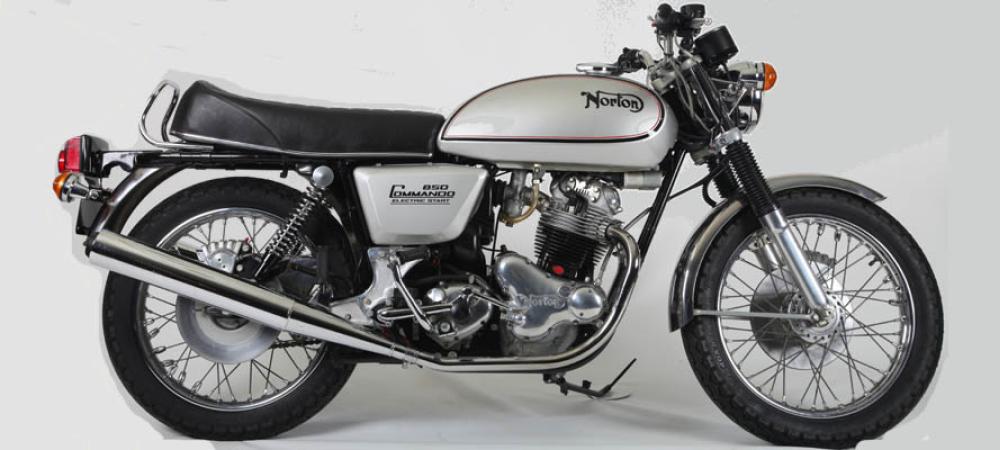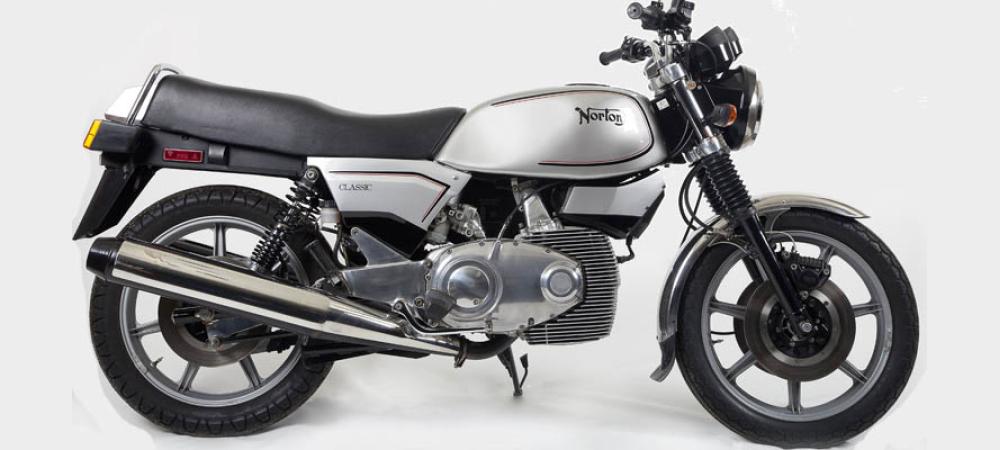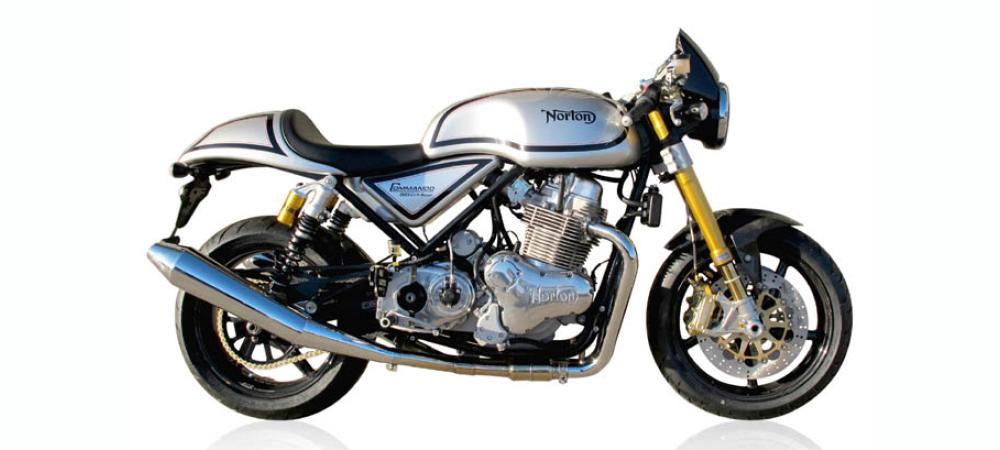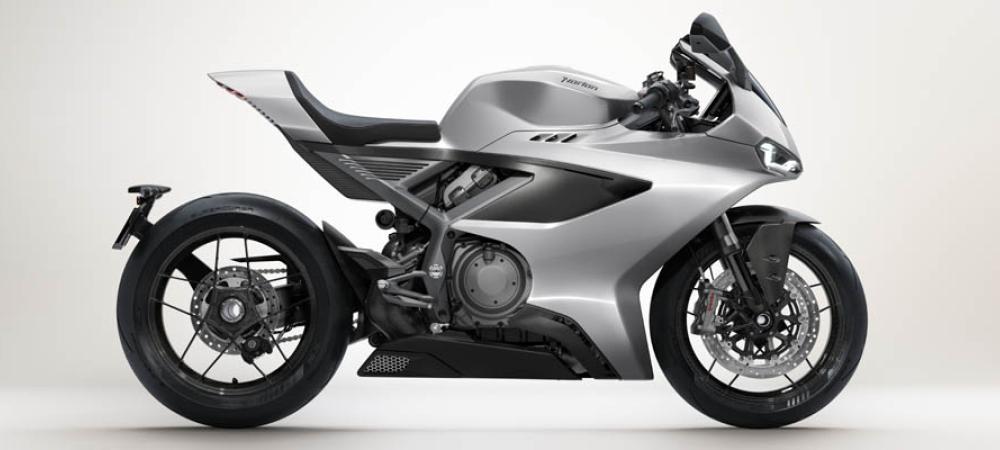WD MODEL 16H AND BIG 4 NORTONS 1936-45
Critics have, for many years, deplored the adoption of a 1937 specification for the Norton motorcycles supplied to the Armed Forces during World War 2. They imply that sometime during September 1939, a 'Whitehall Warrior' phoned Bracebridge Street and ordered a few thousand motorcycles; "YES as soon as possible, NO not the latest model, something earlier will do". The facts recorded in the old Norton archives and reports from contemporary Motor Cycling issues reveal a different situation and in turn shows that those responsible for the purchase of military motorcycles were competent people, who fully appreciated the need to avoid complications in what is, in truth, only a mundane tool in the armoury of war.
Back in 1935 the Army had become disillusioned by the shortcomings of the 'Vee' twin 50Occ ohv BSA machines which had been purchased a few years earlier to replace veteran Douglas and Triumph machines. Major manufacturers were invited to submit a machine for evaluation tests, with the BSA machine being used as a 'control' for the requirements. During May 1935 Norton responded by constructing a 16H to a quasi trials specification. Features of the machine built to the Army's requirements included a high clearance frame, sports tyres, carrier, speedo, electric horn and green finish. Subsequent to the test of eight machines including Enfield, Matchless and Triumph, the Army Report of December 1935 said all the machines submitted for evaluation were superior to the BSA, but the Norton had proved to be the most outstanding. Early in 1936 the Directorate of Army Contracts (DAC) had finalized its specification and a contract was awarded to Norton for 300 machines plus spare engines and frames. The DAC specification called for 5.75 inches ground clearance, trials type footrests, long propstand, stronger fork springs and WD green paint finish. Work commenced in February and all were completed by mid March. Two further contracts were awarded that year and by the end of 1936, 900 Model 16Hs had been delivered to the Army.
By 1936 the rising menace of Nazi Germany had been recognized and rearmament was underway throughout the country, with Government orders for ships, aircraft and all manner of munitions. During 1937 contracts for a further 2000 machines were placed with Norton. Updates from 1936 were few, the main change being the adoption of 'constant voltage' electrics. This was easily retro-fitted to the earlier bikes as they underwent routine overhaul. It would become a feature of these WD machines that any improvements could be readily fitted and no major alterations to the basic machine would be needed. A spin off from the War Office contracts were orders from the India Office for 240 16Hs and a similar number of Model 18s. Aircleaners and other changes were made to meet the harsher environment beyond the British Isles.
During 1937 Norton secured a contract through their Paris agents Psalty for the supply of 500 Model 18 military motorcycles finished in black. To what use these machines were put remains unclear in spite of research. Norton had lagged behind most other manufacturers in the matter of valve gear enclosure. It was not until the 1938 season that Norton introduced full enclosure on their overhead and sidevalve engines. (The overhead camshaft engines never did have full enclosure). In November 1937 a WD 16H with the new 1938 type engine was dispatched for evaluation to the Army's Mechanical Experiment Establishment (MEE) at Aldershot. Many major parts of the 1938 engine are not interchangeable with the earlier power units and at that point in time, the Army already had over 3000 earlier bikes in service. A change would lead to unwanted additions and complications with engine spares. So during 1938 the DAC ordered a further 900 machines to the earlier 1937 specification. The factory's order book was augmented by another 500 machines for the India Office, 50 for the Nizam's Forces, others for the High Commissioner for South Africa and the Crown Agents. Some of these orders adopted the 1938 engine, the purchasers not having any commitment with the earlier engine.
The Army's top brass encouraged improvement of the Army motor cyclists skills and an Executive Committee was constituted which had Capt. D.R. Hall and Graham Walker (the Editor of Motor Cycling) amongst its members. Dennis Mansell was co-opted onto this body, although his position as a manufacturers representative precluded direct involvement. With further advice from the ACU, this Committee inaugurated an Army Inter Command Championship in which all contestants mounted on WD motorcycles undertook tests related to operational use, including cross country work. The event was first held in 1938 and saw all major awards going to riders on the 16H. A similar result was seen with the 1939 event. The Committee also initiated selected Army riders competing in open trials and the International Six Day Trial (ISDT). Early in 1938 Norton had provided several special motorcycles to MEE, including a 1937 ex-works trials machine, an ES2 and 16H to civilian trials specification. Another factory asset with MEE was a 596cc ES2 Trials sidecar outfit and this was used by Mick Tracey in open trials. The 1938 ISDT was super severe and only one Army rider survived the week. For the 1939 Scottish Six Day Trial three WD 16H machines were entered for an Army team. A 21 inch front wheel and racing magneto were about the only non standard items used and all three finished. They effectively demonstrated that the standard Army motorcycle's capability was not far behind the specialist machines used by the leading competition riders.
During the early part of 1938, the DAC ordered 15 sidecar wheel drive (SWD) machines for evaluation. The Authorities presumably having seen the German Army's BMW and Zundapp outfits decided they should have something similar. No person in Britain knew more about SWD machines than the man they were already dealing with at Norton, Dennis Mansell. It is probably not surprising to find the system adopted for the military was not the one Dennis already used on his outfit in open trials, but the inherently stronger Baughan live axle system. (Mansell's outfit used pairs of gears in the rear and sidecar hubs, linked with a dog clutched cross shaft). H. E. Baughan of Stroud had pioneered his system in 1929 and had held discussions in 1932 with the War Department about its possible adoption, but his idea was not taken up at the time, The first SWD WD Norton was completed during May 1938 and the other 14 were built in August incorporating minor alterations. The Baughan patents appear to have been circumvented, possibly by the adoption of an angled drive shaft with universal joints. Another 315 were built during May 1939 and this was followed by substantial wartime orders commencing in November. In all about 4500 of these machines were built. Although outwardly resembling the WD 16H, the Big 4 machines had several major differences. The engine was the 1938 enclosed valve gear unit of 633cc capacity, the gearbox housed pinions which gave wide trials ratios, the fork ends on the frame carried the bearings for the live axle transmission, as did the Norton sidecar chassis. The 52 tooth rear sprocket and the front brake drum were specials for the single bearing hubs used on all three wheels and the spare. All wheels were shod with 4.00 x l8 inch tyres. With an unladen weight of over 400kg (8501bs) the use of conventional stands was not practical, instead an Austin 7 car jack (manufactured by Shelleys, Norton's parent company) was in the sidecar boot.
The Norton order book for military machines during early 1939 included some 600 16Hs and 315 Big 4 outfits. Also 300 16Hs for the Air Ministry, 50 16Hs for the India Office and several smaller orders for other Dominion Governments. Nevertheless it was a bomb shell when Norton announced it was withdrawing from International Road Racing for the 1939 season to concentrate on improving its production facilities for military motorcycles. The toolroom would not be able to duplicate production jigs and fixtures and support a racing programme at the same time. The announcement was greeted with wide dismay, with cynics saying Norton had withdrawn as it could no longer beat the supercharged foreign machines. Wiser heads could already see war had become inevitable and the Norton decision was in line with many other enterprises. The DAC had ordered another 1600 16Hs, to the 1936/7 specification and throughout the month preceding the outbreak of war only a handful of civilian machines were produced. During the last week of August 150 machines were assembled, almost entirely military. Civilian production ceased with the outbreak of war and by the end of October 300 WD machines were leaving the factory each week. Massive orders for motorcycles were now being placed by the War Office and factory production exceeded 400 machines weekly by 1940 and finally rose to a high of 500. The decision to withdraw from racing was fully vindicated by the production achievements following the outbreak of war All pre-war Norton military motorcycles carried engine and frame numbers in sequence with civilian machines being built alongside them and this continued after the outbreak of war.
The last of the pre-war numbers, Engine No. 97677 / Frame No. 108024 was on a WD 16H which left the factory on 7th October. The same day machines carrying wartime numbers prefixed W-with identical engine and frame numbers, commenced at W1001. these wartime numbers finally terminated at W96400. A separate numbering system was used for the wartime SWD Big 4 outfits, commencing in November 1939 at Engine / Frame No. S1000. Production was terminated in the autumn of 1941 at S5308. Most of the WD machines went to the British Army, but substantial numbers continued to the RAF, Indian Army and Dominion forces.
Due to the systems operated in military workshops, after overhaul, very few machines retained their identical engine and frame numbers. The workshops dismantled the machines completely and specialists overhauled component parts. Reassembly was on factory lines with fitters taking refurbished components from a series of bins. At the same time as overhaul, retrofitting of updated cycle parts has meant that most pre-war machines no longer retained their original appearance.
With the declaration of war, misguided efforts were made to purchase civilian machines in quantities to swell the forces inventory. Many factories including BSA provided civilian bikes straight from the production line and there are tales of these machines being repainted khaki in France by the units to which they were issued. It was soon realized that maintaining diverse machines in the field was an impossible task. This situation did not really affect Norton, who were already fully committed to military motorcycle production, however a batch of 80 WD Model 18s to 1938 specification were assembled and appear to have been issued to the Guards regiments.
Development of new military motorcycles continued after the outbreak of war, two interesting projects which never went into volume production were a WD 16H with rear springing and telescopic forks and a lightweight 346cc sidevalve with alloy engine, electron gearbox and welded frame. The latter was the subject of a War Office Contract and only one example (Engine / Frame No. LW100) appears to have been built. It is speculated that parts designed for this machine (front hub and steering damper knob) were incorporated in the prototype 500Ts when they appeared late in 1947.
© Peter Roydhouse 2000
Originally published in the Norton Owners Club Classic Calendar for 2001

